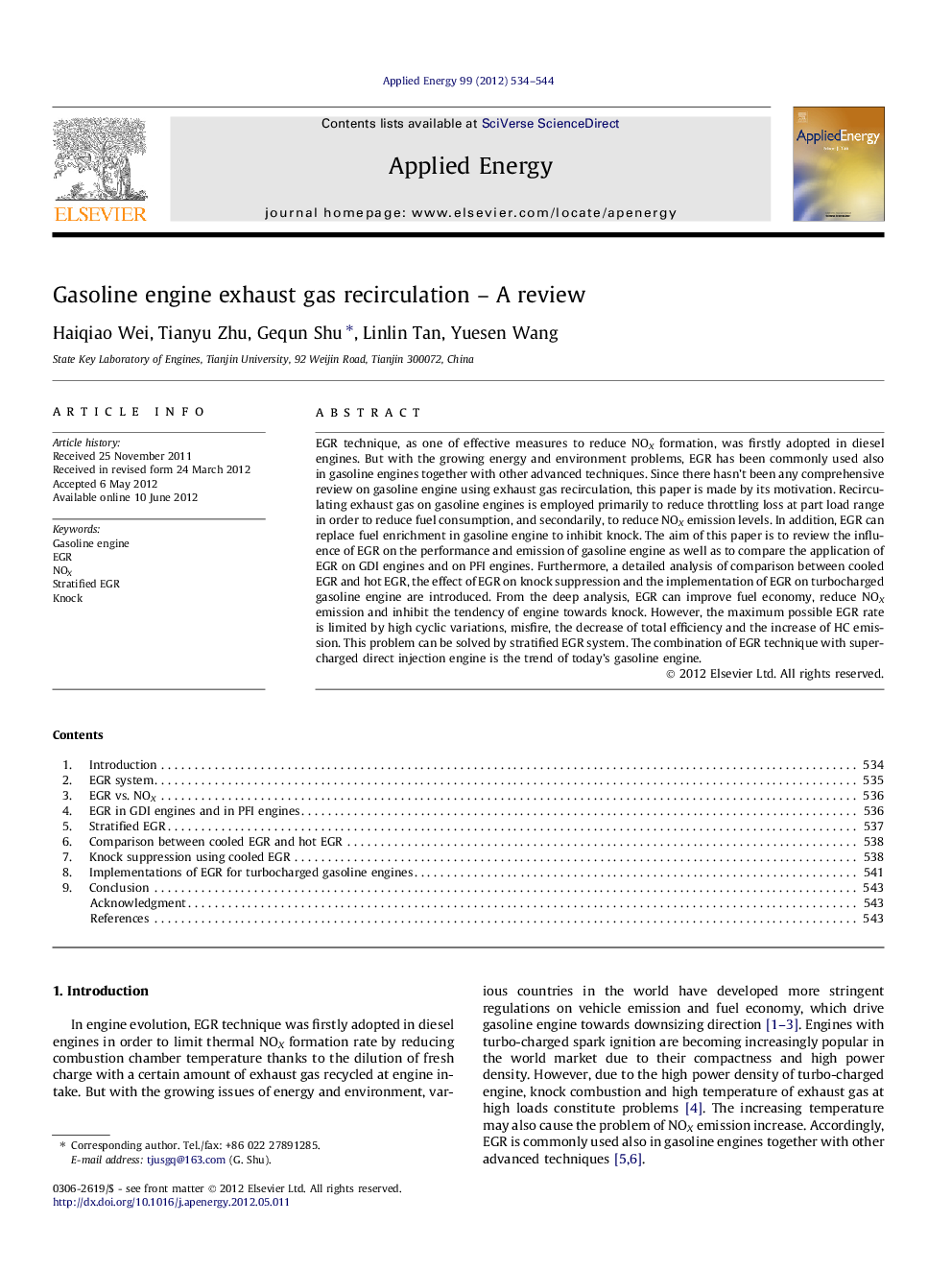| Article ID | Journal | Published Year | Pages | File Type |
|---|---|---|---|---|
| 6694497 | Applied Energy | 2012 | 11 Pages |
Abstract
EGR technique, as one of effective measures to reduce NOX formation, was firstly adopted in diesel engines. But with the growing energy and environment problems, EGR has been commonly used also in gasoline engines together with other advanced techniques. Since there hasn't been any comprehensive review on gasoline engine using exhaust gas recirculation, this paper is made by its motivation. Recirculating exhaust gas on gasoline engines is employed primarily to reduce throttling loss at part load range in order to reduce fuel consumption, and secondarily, to reduce NOX emission levels. In addition, EGR can replace fuel enrichment in gasoline engine to inhibit knock. The aim of this paper is to review the influence of EGR on the performance and emission of gasoline engine as well as to compare the application of EGR on GDI engines and on PFI engines. Furthermore, a detailed analysis of comparison between cooled EGR and hot EGR, the effect of EGR on knock suppression and the implementation of EGR on turbocharged gasoline engine are introduced. From the deep analysis, EGR can improve fuel economy, reduce NOX emission and inhibit the tendency of engine towards knock. However, the maximum possible EGR rate is limited by high cyclic variations, misfire, the decrease of total efficiency and the increase of HC emission. This problem can be solved by stratified EGR system. The combination of EGR technique with supercharged direct injection engine is the trend of today's gasoline engine.
Keywords
Related Topics
Physical Sciences and Engineering
Energy
Energy Engineering and Power Technology
Authors
Haiqiao Wei, Tianyu Zhu, Gequn Shu, Linlin Tan, Yuesen Wang,
